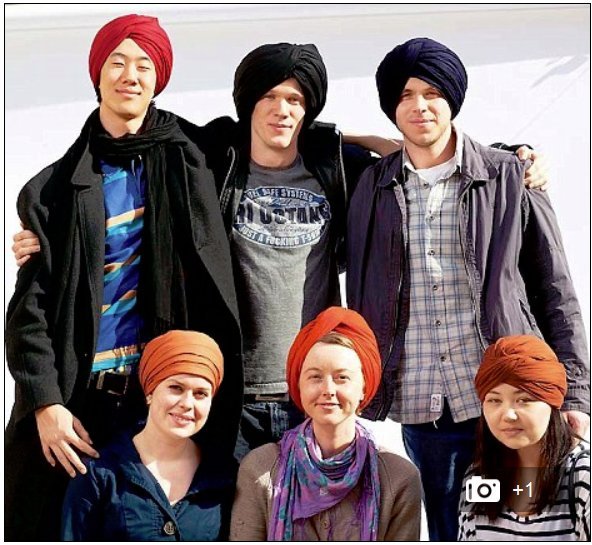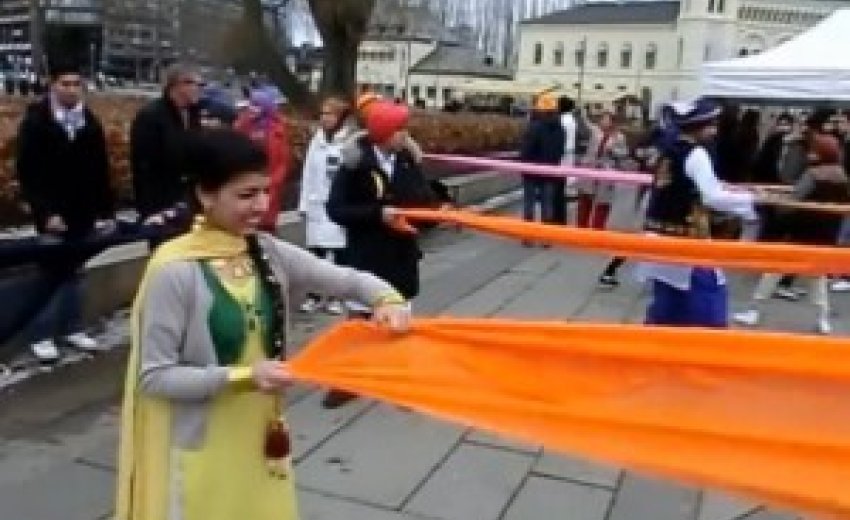Norway goes the turban way in annual Sikh celebration

As celebrations redolent of makki-di-roti and sarson-da-saag announce the arrival of Vaisakhi, on the main streets of Oslo, hundreds of Norwegians will celebrate the occasion in cream, saffron, blue and red turbans.
With blessings from the Norwegian government, the annual Turban Day celebrated on April 14 is turning three this year.
Born and raised in Oslo, 28-year-old Sumeet Singh Patpatia, a finance professional who is one of the organisers of the event, explains how the idea took root.
 |
| A head for fashion: Norwegians of all ages will be donning the Sikh headgear in Oslo |
'The aim of the Norwegian Turban Day is to re-launch the turban as a symbol of solidarity, equality and religious freedom,' Patpatia said.
'The past years have been characterised by prejudices in public debate, and there is a growing tendency towards polarisation in all societies. We wanted to give Norwegians a chance to understand our community better.'
Apart from encouraging the local community to clear the doubts that they may have about the community, measures such as these, Patpatia added, also help in 'making it easier for a bearded young Sikh to be accepted in a different society with his turban'.
An initiative of Oslo's Sikh community, the event is spearheaded by the Unge Sikher (Sikh Youth) under the banner of the Gurdwara Sri Guru Nanak Dev Ji Oslo. Oslo's first gurudwara was established in 1984, although Sikhs had started arriving in the Scandinavian country in 1970s.
In the aftermath of Indira Gandhi's assassination in 1984, many of them sought and got political asylum in Norway - the most notable (and controversial) case being that of the serving Indian diplomat, Harinder Singh.
Elaborating on the Norwegian Turban Day schedule, Patpatia said: 'After the nagar kirtan (neighbourhood procession), which ends at University Square, we have the gatka (martial arts demonstration) and then the langar.
'Norwegians find the idea of a langar particularly fascinating because it is open to everyone and all are treated with warmth.'
The day-long event, which begins at 12 noon and continues till 6 pm, has visitors to Oslo asking the organisers to arrange similar shows in their cities too.
'Last year, by four in the evening we had tied about 600 turbans and with two hours more to go, we fell short of turbans,' Patpatia said.
This year, he's better prepared - 'we have about a thousand turbans ready,' he said, adding that he expected a substantial increase in the number of people participating in the event.

